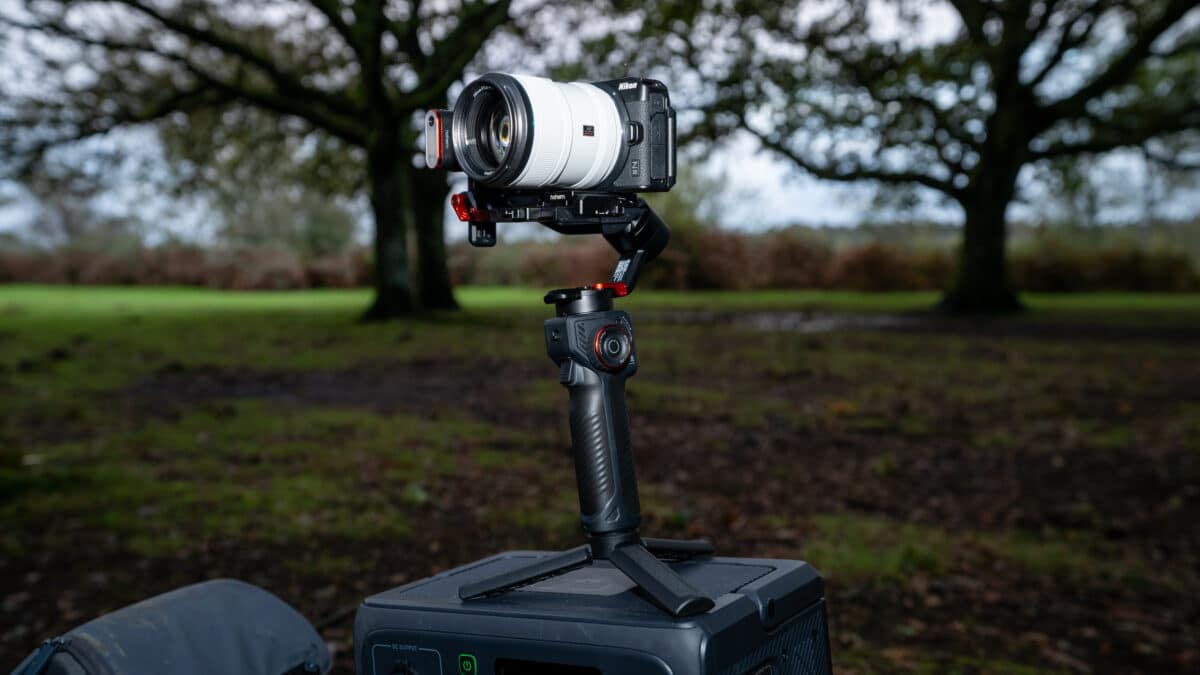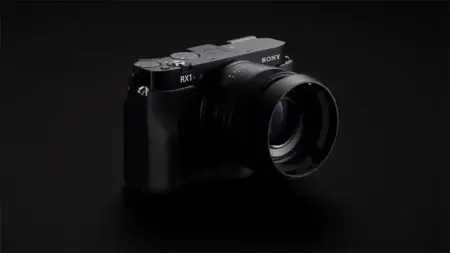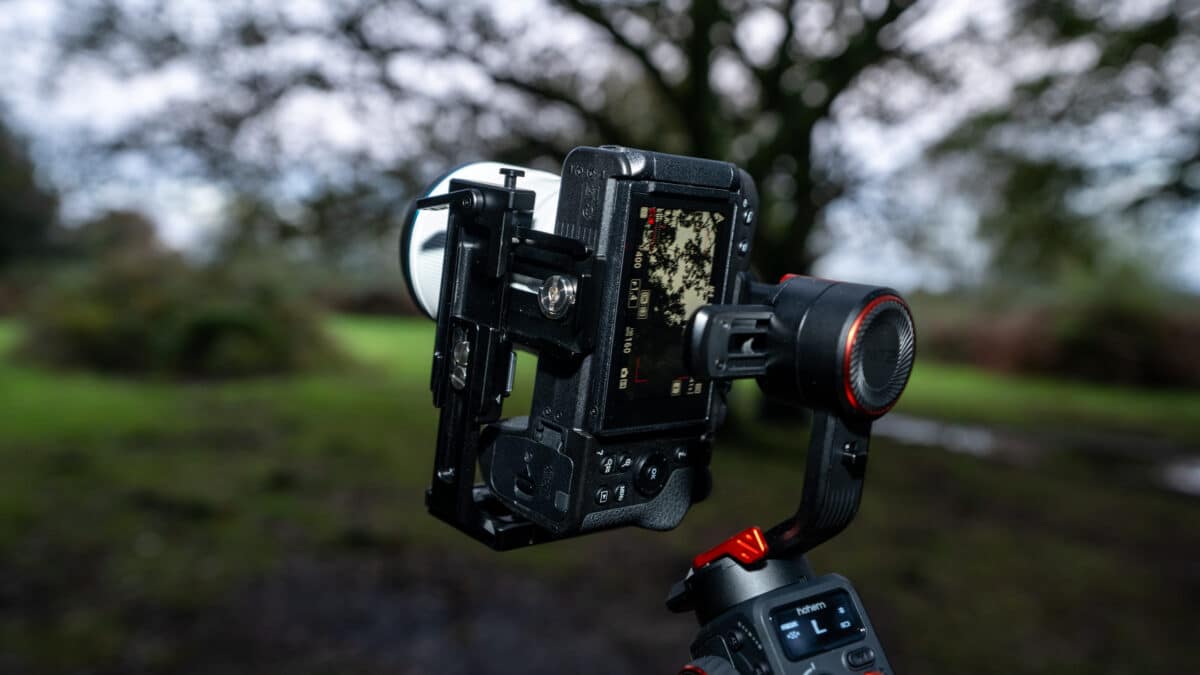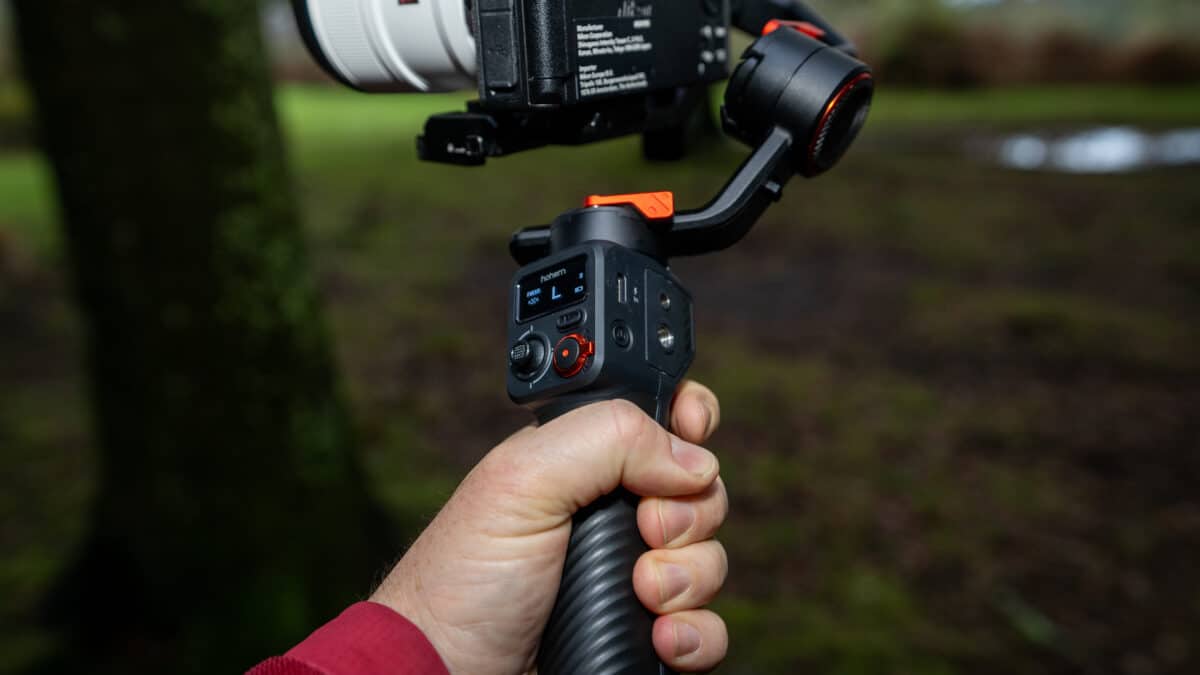It’s rare to randomly grab two pieces of photography equipment from two different manufacturers only to find that they match up perfectly, as if they were made for each other. However, that’s exactly what happened with the small Hohem MT2 and Nikon Z30; this is an ultimate match, and one that has not only surprised me but also completely changed my opinion of the small vlogging camera.
But before we start with the perfect match, I’ll run you through its use with the Sony A7 III, as this was the first camera that I tried, fitted with the Sony 35mm f/1.4. This combo also worked well, but as the gimbal was manoeuvred around, I did get the feeling that although it wasn’t pushing the max payload and the gimbal could cope well with the weight, it had more to do with the distribution of that weight. Nevertheless, it handled the stabilisation well and was able to cope with relatively quick moves.
During the balancing process, it was evident that the body and lens combo I had chosen was just a little over what the gimbal had been designed for. Pop on the smaller 35mm from Sony, and the balance might have felt a bit better, but as it was, it all felt a little top-heavy due to the lightweight nature of the gimbal itself.
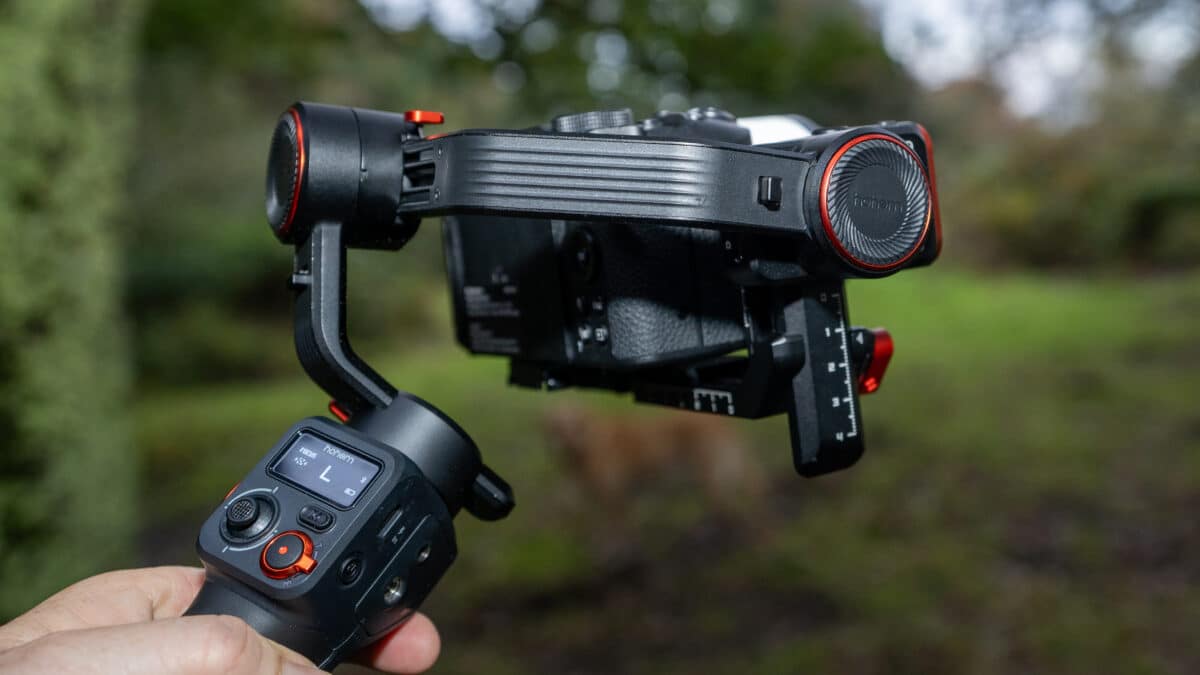
At present, I also have the Nikon Z30 for a feature. I haven’t given it much thought aside from rather liking the design. However, as the Sony had pushed the limits, I decided to try the Nikon Z30 as a smaller alternative choice. The difference was instant: the balance was perfect, the handling amazing.
Through the test, I ended up combining the Z30 with the Sirui Sniper range of lenses, and what a combination. Pop the Sennheiser MKE400 on top, and you almost have the ultimate vlogging combo. Well, it would be if you could control the camera from the gimbal, which unfortunately, you can’t.
That lack of direct gimbal control is an issue, mainly because in every other way it all balances and works perfectly. With the Sony A7 III, while not balanced quite so well, you do have that direct control through a USB cable or Bluetooth, which is incredibly handy.
It’s a little frustrating that the Z30 isn’t fully compatible, whether that’s due to Nikon and just a limitation of the camera, or something that will be updated at a later date with a firmware update, is unknown. Still, however you look at it, the Z30 and the MT2 are a great fit. No doubt the Z50, which does offer Bluetooth and cable connection, would be an even better fit.
Likewise, the Sony A7 series with a smaller lens would also work equally well. I trialled it with the small 35mm f/1.8, and that all worked incredibly well. Hohem does actually put a list of camera and lens combinations on their website, so it’s well worth a check. [Hohem Compatibility List]

So far, I’ve only covered the Hohem MT2 used with mirrorless cameras, but it’s equally compatible with smartphones, action cameras, compact cameras, and of course, mirrorless/DSLRs.
Keeping up to date with the latest filming fashions, the orientation of the camera can be quickly switched from landscape to vertical. Unlike some older gimbal systems that enabled you to click a button and the gimbal would flip to portrait, here the base plate can be released and manually flipped. It takes a couple of seconds and allows for far more movement after the orientation change than the older systems tend to use.
The most impressive part of the system is the magnetic fill light and AI vision sensor. This is held to the side of the gimbal by magnets and firstly enables a fill light to flood the scene; it’s well diffused and just powerful enough to be useful in lower light conditions. The brightness of the light can also be adjusted easily to meet the demands of the scene.
However, the really impressive part of the system is the AI tracking. Now, this is available as an extra on most other gimbal systems from DJI and ZHIYUN, but not like this. Those other systems require additional and expensive kit, whereas here it’s built into the AI light and comes in the kit.
It also doesn’t require loads of setting up through an app, wires, and cables; it just works out of the box. It works through gesture commands; make the ‘OK’ sign with your hands, and the gimbal will start to pan with you, and quickly. Out of the box, I found that it would cut off the top of my head, but then a custom reframe, activated by holding your hands in a framing gesture, and the gimbal corrects. I honestly cannot highlight how simple the system is and just how effective it is.
When you consider the price and the target audience, the Hohem MT2 doesn’t try to be something bigger; it fits perfectly into the market that it’s intended for. While the build quality is good, the design aesthetics don’t quite meet those of DJI or ZHIYUN. However, when it comes to practicality and use, I’d say the Hohem MT2 is out ahead.

